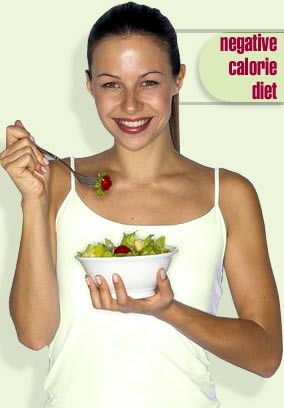 |
Negative calorie diet refers to certain food items that use more calories to digest than the calories present in the food. Intake of negative calorie food item prompts your body to work harder, use more energy in order to extract calories present in the food items. As a result, more calories are subtracted from your body than added after eating these foods.
Since its inception in 1997, thousands of people all over the world have benefited from adhering to this diet concept. Negative calorie diet foods encourage you to eat your way and still lose weight - close to 14 pounds in just 7 days.
Wonder how this is possible? Read through the article and learn all about negative calorie diet. You can then make an informed decision on food consumption that will make you feel healthy, energized and have an envious body shape.
Composition of food
All foods consumed have nutrient (carbohydrate, fat, protein), caloric (calories), vitamin and mineral content. When you ingest food, your body produces enzymes to break down the calories contained in the food. With negative calorie diet, the amount of vitamins and minerals is higher. Consequently the body produces more enzymes than needed to break down the calories contained in the food itself. As a result, more calories are burnt leading to weight loss.
There are no foods that have negative calories. Constituents of a negative calorie diet are foods that contain very little energy and where the body uses more energy for digestion and absorption of nutrients. Critics of this diet plan argue against offsetting the positive calorie energy reserves of the body. But it cannot be denied that eating certain foods increases your metabolic processes that can lead to weight loss.
Negative calorie food diet
- Creates negative calorie effects allowing you to lose weight
- Uses more calories for digestion than the calories actually contained in the foods
- Your body has to work harder in order to extract calories from these foods
- Contains tremendous natural fat-burning advantage
- Highly dependent on the speed of body metabolism
- Restricted to fruits and vegetables only
- Should be eaten raw in natural state
Negative calorie diet - How it works
Food items that belong to negative calorie diet take up more caloric energy (calories) to digest than the calories it contains. So, if you consume more negative calorie diet foods, you could lose more weight. Take for instance, an orange that may contain 50 calories. On consumption, your body expends certain amount of energy (which is more than 50 calories) to absorb and digest the nutrients and vitamins within the orange. During this process, you burn off calories and benefit from a negative calorie effect. A 1 ½ ounce stalk of celery contains about 7 calories but it would need about 30 calories to break it down.
Deficit calorie effect
Step 1: Chew negative calorie food
Step 2: Esophagus moves it to your stomach in few minutes
Step 3: In four hours the stomach mixes the food with acid
Step 4: The small intestine receives the mixed food
Step 5: Another four hours to receive alkaline (digestive juices) from gallbladder and pancreas
Step 6: Food is now liquefied and body starts to absorb it.
Step 7: The large intestine processes the rest of food and fluids in 12 hours
Step 8: Any residue left over is gradually eliminated.
This entire process burns calories and results in weight loss.
Foods in a negative calorie diet
There are more than 100 negative calorie diet food items comprising of fruits and vegetables. To name a few, the list includes asparagus, lettuce, broccoli, beets, onions, cabbage, carrots, cucumber, zucchini, apples, oranges, blueberries, pineapple, papaya, peach, grapefruit, raspberries and strawberries.
Negative calorie diet - Pros and Cons
- Consumption of food in raw natural state
- Advocates generous consumption
- Promises improved body metabolism
- No fasting, only dieting on nutritious negative calorie foods
- Suitable for weight loss and subsequent weight maintenance
- Practical, maintainable and easy to follow
- Can be followed in conjunction with another dietary schedule
- No scientific proof on it's effectiveness
- Cannot track food intake and calories burnt
- Excludes certain foods essential for good health
- Highly related and dependent on body metabolism
Success of any dietary plan is measured in terms of the result it brings about. Adhering to negative calorie diet, you get to enjoy twin benefits - eating nutritious food items in natural state and creating a deficit calorie impact in your body. It is possible for you to follow negative calorie diet in conjunction with another diet plan. This way you can ensure nutritional supplements required for your body. Combine it with regular exercise and physical activity and embark on a journey to good health.
|


